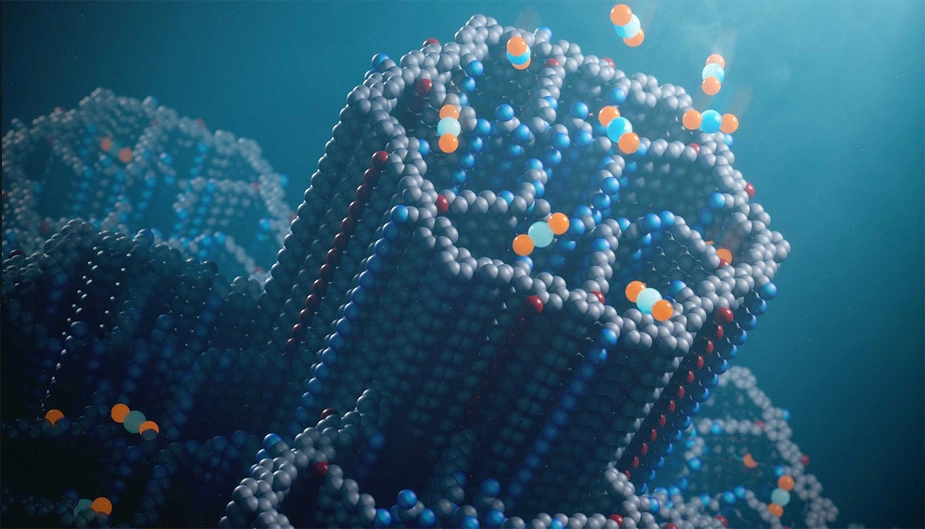New material for extracting carbon dioxide from air and exhaust gases
Quantum chemical calculations by HU enable the development of porous materials distinct by a high adsorption capacity for CO₂
Climate experts agree: To tackle the climate crisis, we will not only need to reduce carbon dioxide (CO2) emissions but also directly filter the harmful gas from air and exhaust gases. To this end, scientists are working on ‘Direct Air Capture’ technologies and are searching for suitable materials that can effectively bind (adsorb) CO2 molecules and release them in concentrated form upon temperature increase, allowing the gas to be stored underground, for example.
Successful synthesis of the material COF-999
In the journal Nature, an international research team, including Prof. Dr. Joachim Sauer from Humboldt-Universität zu Berlin (HU), reports on the chemical synthesis of the special material, COF-999, achieved by doctoral student Zihui Zhou from the research group of Prof. Dr. Omar Yaghi at the University of California (UC) at Berkeley. The material is an organic framework compound (Covalent Organic Framework – COF), in which polyamines bound to the framework in the pores are responsible for the adsorption of carbon dioxide molecules.
“It is remarkable, that this material not only has a very high absorption capacity for CO2 but that this capacity is even several times higher in the presence of water. Water, which is always present in ambient air and exhaust gases, does not disturb here but surprisingly has an extremely positive effect,” says Sauer, a renowned quantum chemist and Senior Researcher at the Department of Chemistry at Humboldt-Universität.
HU researcher elucidates the functioning of COF-999 through quantum chemical calculations
As a member of the research team, Joachim Sauer was responsible for the quantum chemical elucidation of the material's functioning at the atomic level. The insights gained from experiments were not sufficient to determine the exact location of the atoms (amine groups) in the porous solid structure where the CO2molecules ‘dock on’. Therefore, the first step was to establish a structural model that is consistent with the experimental findings. In the second critical step, it was necessary to calculate how strongly CO2 binds to the various amine groups in different positions and how this changes in the presence of water molecules (H2O).
Prof. Dr. Joachim Sauer: “Our quantum chemical calculations are indispensable because an understanding of how things work at the atomic level is the basis for developing even better materials. We are currently working on this with our partners at UC Berkeley and the University of Chicago.”
Publication
Carbon dioxide capture from open air using covalent organic frameworks
Zihui Zhou, Tianqiong Ma, Heyang Zhang, Saumil Chheda, Haozhe Li, Kaiyu Wang, Sebastian Ehrling, Raynald Giovine, Chuanshuai Li, Ali H. Alawadhi, Marwan M. Abduljawad, Majed O. Alawad, Laura Gagliardi, Joachim Sauer & Omar M. Yaghi
Nature 635, 96–101 (2024). DOI:10.1038/s41586-024-08080-x
Contact
Prof. Dr. h.c. Joachim Sauer
Quantum Chemistry Research Group
Department of Chemistry
Humboldt-Universität zu Berlin
js(at)chemie.hu-berlin.de
Press release HU Berlin, 16 January 2025
